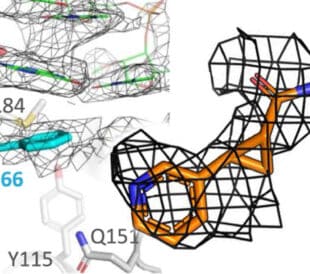Known as one of the biggest challenges to high-quality cryo-EM analysis, efficient cryo-EM sample preparation is of particular importance for labs and the shared facilities they use.
When cryo-EM sample preparation becomes a bottleneck in the queue at these shared facilities—most often because samples are rejected due to poor quality—it puts a strain on the system, and ultimately slows scientific discovery.
Earlier this year, we introduced you to the future of cryo-EM sample preparation—including a solution that shifts sample qualification away from shared instrumentation and moves it in-house with new dedicated sample optimization tools. When this is done, researchers only send out optimized and analysis-ready samples to core imaging facilities, saving them time and money. It also helps shared facilities clear instrument time for higher impact experiments.

Dr. David M. Belnap, PhD, at the University of Utah
We sat down with David M. Belnap, PhD, research associate professor and director of the Electron Microscopy Core Laboratory at the University of Utah, to discuss the important evolution of this process, and the future of cryo-EM.
What are some of the biggest areas of opportunity for making core facilities, and cryo-EM sample preparation, more efficient?
One area of opportunity would be to train users—those who are studying the macromolecule—so that they can participate in the cryo-EM process. The projects we work on require a lot of time and effort, especially in the early part. It’s difficult. You have to purify the specimen and get it ready for cryo-EM. With only so much time and so many staff, I think that it would be much more efficient to have somebody else do the cryo-EM sample preparation, rather than depending on us to do it. Then, at the core facility, we can spend our limited time taking high quality pictures for that study.
If every sample received was completely optimized, what would that mean for your facility’s time and resources?
That would really help. If everything we touched was ready to go—ready for high-resolution imaging—we could ensure efficient, everyday use of our high-end instruments, including our Thermo Scientific Krios Cryo-TEM. We could use it 24 hours a day and obtain thousands of images. But too often we can’t, because the samples aren’t ready.
What advice can you give your customers to help them with cryo-EM sample preparation and to get the most out of their core facility use?
I think the best thing that they can do is to view this as a long-term investment. Getting a high-quality structure will take a significant effort. Sometimes the view of cryo-EM is that it’s a panacea and it’s not. Proteins seem to be as individual as people are. It can be difficult to get your protein, your macromolecular structure, in the right condition to image on a high-resolution instrument. The best advice I can give is to take the time to learn cryo-EM so that your lab can get its specimens ready to use at shared facilities.
Do you think the demand for cryo-EM will increase in the next three to five years?
Yes. I think so. With increasing demand, hopefully we will also see more funding opportunities. We will also really need to think of ways to improve efficiency and meet demand.
What are some of the benefits you have experienced with innovations in cryo-EM?
The instrumentation has been the most important development in the last 10 years.
The improvement in instrumentation improves the entire field as those developments make it easier to get higher resolution. One of the things that we have been very pleased with is our Krios Cryo-TEM. We don’t have to spend as much time dealing with alignments. We can get right into analyzing and looking at specimens relatively quickly compared to other instruments. It’s very stable. For example, when I’m doing tomography, I spend much less time worrying about tilting compared to other instruments I’ve used.
What is the future of cryo-EM in the life sciences?
The future of cryo-EM in Life Sciences is very bright. Until we can solve all the probable billions of different ways that macromolecular complexes interact with each other, we will have work to do.
Learn more about the Tundra Cryo-TEM on our product page >>
New to cryo-EM? Download our eBook to learn more >>
//
Suzanne Graham is the Senior Director Business Development at Thermo Fisher Scientific.
Subscribe Now to receive new Accelerating Microscopy posts straight to your inbox.




Leave a Reply